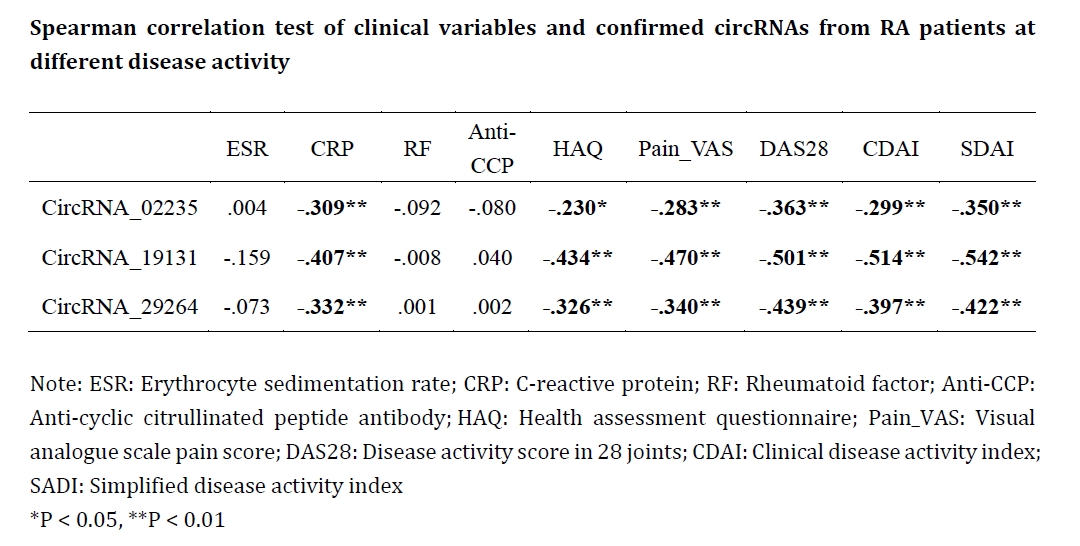Session Information
Session Type: ACR Poster Session A
Session Time: 9:00AM-11:00AM
Circular RNAs Expression Profile in Chinese Rheumatoid Arthritis Patients at Different Disease Activity
Background/Purpose: Rheumatoid arthritis (RA) is an autoimmune-mediated chronic inflammatory joint disease, that is still no clear pathogenesis for patients to be cured in a timely manner. Circular RNAs (circRNAs) have been recently identified as noncoding RNAs in most common model organisms and show potential as gene regulators. Here, we profiled the circRNAs expression of RA at different disease activity to improve our understanding of RA pathogenesis.
Methods:
Expression profiling was performed by high throughput sequencing using whole blood RNA samples obtained from 12 RA patients. In each group there were 3 patients at low, moderate, high disease activity, respectively, as well as 3 heathy controls. Quantitative real time reverse-transcription polymerase chain reaction (qRT-PCR) was used to identified the differential circRNAs. Spearman correlation test assessed the correlation of circRNAs and clinical variables.
Results:
Compared to health controls, a total of 155 circRNAs and 161 circRNAs were significantly upregulated and downregulated, respectively, in RA patients. qRT‑PCR detection showed that the expression levels of downregulated circRNA_29264 (hsa_circ_0007889), upregulated circRNA_19131 (hsa_circ_0003123) decreased as the disease activity increased, upregulated circRNA_02235 was higher in remission than other disease activities. The correlation test showed the negative correlation among three circRNAs and C-reactive protein (CRP), health assessment questionnaire (HAQ), VAS pain score, disease activity score in 28 joints(DAS28), clinical disease activity index(CDAI) and simplified disease activity index(SDAI), respectively.
Conclusion:
This work illustrates that circRNAs dysregulation may play a role in RA pathogenesis, and three key circRNAs show promise as candidate biomarkers for development of RA.
To cite this abstract in AMA style:
Liu H, Xie Q, Yin G. Circular RNAs Expression Profile in Chinese Rheumatoid Arthritis Patients at Different Disease Activity [abstract]. Arthritis Rheumatol. 2018; 70 (suppl 9). https://acrabstracts.org/abstract/circular-rnas-expression-profile-in-chinese-rheumatoid-arthritis-patients-at-different-disease-activity/. Accessed .« Back to 2018 ACR/ARHP Annual Meeting
ACR Meeting Abstracts - https://acrabstracts.org/abstract/circular-rnas-expression-profile-in-chinese-rheumatoid-arthritis-patients-at-different-disease-activity/



